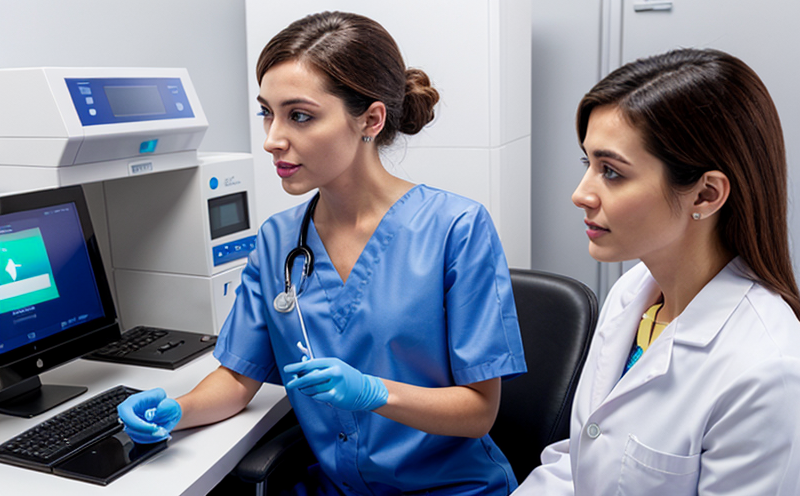RT-PCR Detection of Rotavirus in Veterinary Samples
The Real-Time Polymerase Chain Reaction (RT-PCR) detection method is a cornerstone in the diagnosis and management of rotavirus infections, particularly within veterinary settings. Rotaviruses are a significant cause of gastrointestinal illnesses among animals, especially in young puppies and kittens. The RT-PCR test enables rapid identification of viral RNA, providing accurate results in just a few hours.
Rotaviruses belong to the family Reoviridae and include multiple strains that affect different species. In veterinary medicine, rotavirus infections are prevalent among dogs, cats, and farm animals like pigs and calves. The ability to quickly detect these pathogens is critical for effective treatment, containment of outbreaks, and minimizing suffering in affected populations.
The RT-PCR process involves several steps: RNA extraction from the sample, reverse transcription into complementary DNA (cDNA), amplification using primers specific to rotavirus sequences, and finally, quantitation through fluorescence detection. This method provides high sensitivity and specificity, making it ideal for diagnosing even low viral loads.
The instrumentation used in RT-PCR includes a thermocycler capable of precise temperature control, reagents such as PCR master mix, extraction buffers, and dye probes that fluoresce upon binding to specific target sequences. The quality of these reagents is paramount; they must meet strict quality control standards outlined by international organizations like ISO 17025 for calibration and traceability.
Sample preparation is critical in RT-PCR testing. Veterinarians collect fecal samples from suspected cases, which are then processed according to standard protocols. Ensuring proper specimen collection and handling prevents contamination and ensures accurate results. Following extraction of viral RNA, reverse transcription occurs using the appropriate enzyme cocktail.
The subsequent amplification step relies heavily on primers designed to bind uniquely to rotavirus sequences. These primers must be carefully selected based on known genetic variations within different strains of rotavirus. Standard protocols recommend cycling conditions that optimize both specificity and sensitivity for accurate detection.
Post-amplification, the products are analyzed using real-time monitoring techniques such as TaqMan probes or SYBR Green dye. Fluorescence intensity is measured throughout each cycle, allowing precise quantification of viral RNA copies present in the sample. This approach not only confirms presence but also estimates viral load.
Accurate and timely diagnosis via RT-PCR helps guide appropriate therapeutic interventions early on, reducing the duration of illness and potentially preventing further spread through quarantine measures or enhanced hygiene practices. Early detection also aids in epidemiological studies aimed at understanding rotavirus transmission dynamics within animal populations.
Compliance with relevant regulatory bodies ensures reliability across laboratories performing this test. Adherence to guidelines set forth by organizations like the World Organisation for Animal Health (OIE) guarantees consistency and comparability of results internationally.
Why It Matters
The timely diagnosis of rotavirus infections in veterinary settings is crucial due to its high prevalence among young animals. Rotaviruses can cause severe diarrhea, dehydration, and even death if left untreated. Early detection allows for prompt administration of supportive care measures such as fluid therapy, electrolyte replacement, and antiviral treatments when available.
From a public health perspective, controlling zoonotic diseases like rotavirus is essential to protect both animal welfare and human safety. Effective monitoring through robust diagnostic tools helps prevent the emergence and spread of potentially dangerous strains across species barriers.
Incorporating advanced technologies such as RT-PCR enhances our capability to manage these threats more efficiently. By leveraging this technology, veterinarians can better understand local patterns of infection, identify risk factors associated with outbreaks, and implement targeted control strategies accordingly.
Benefits
The implementation of RT-PCR for rotavirus detection offers numerous advantages. Primarily, it provides rapid turnaround times compared to traditional culture methods, which can take days or weeks to produce results. This speed is vital in managing outbreaks quickly and effectively.
Rapid diagnosis enables more precise treatment plans tailored specifically to the identified strain(s). Understanding the exact type of rotavirus present allows veterinarians to select appropriate medications that target its specific characteristics optimally.
Additionally, RT-PCR facilitates better resource allocation by identifying cases accurately without overtreating or underutilizing resources. This efficiency contributes significantly towards cost savings and improved patient outcomes.
Achieving accurate results through this methodology supports epidemiological research efforts aimed at understanding rotavirus spread patterns among various populations of animals. Such insights contribute valuable information for developing prevention strategies, enhancing biosecurity measures within facilities, and informing public health policies globally.
Use Cases and Application Examples
| Use Case | Description | Application Example |
|---|---|---|
| Rapid Diagnosis During Outbreaks | Identify the presence of rotavirus quickly to initiate containment measures promptly. | A large-scale outbreak occurred at a puppy breeding facility. RT-PCR tests confirmed rotavirus, allowing for immediate isolation and treatment protocols. |
| Treatment Monitoring | Determine whether prescribed antiviral therapy is effective against the specific strain identified. | A clinic treated multiple kittens with suspected rotavirus infection using antivirals. RT-PCR followed up to assess clearance of viral RNA post-treatment. |
| Research and Epidemiology | Analyze patterns of rotavirus transmission between different animal species or geographic locations. | Veterinarians collaborated with a university laboratory to conduct a longitudinal study tracking rotavirus spread among various farm animals across multiple regions. |
| Educational Purposes | Teach students and professionals about the principles of molecular diagnostics using real-world examples. | A veterinary school used RT-PCR results in their curriculum to demonstrate how advanced technology aids in diagnosing challenging diseases like rotavirus infections. |





